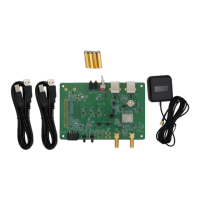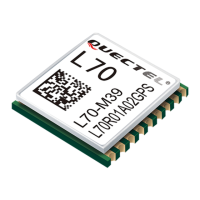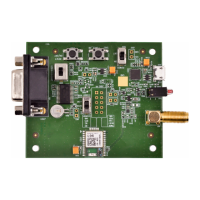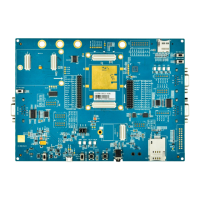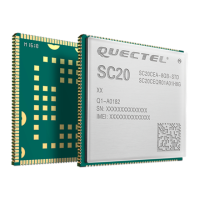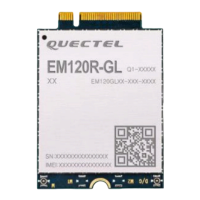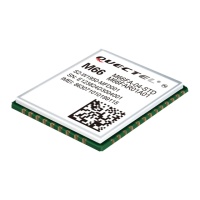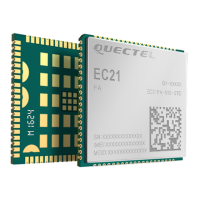GNSS Module Series
LC79D Hardware Design
LC79D_Hardware_Design 26 / 42
4 Antenna Interfaces
LC79D module supports GPS, BeiDou, GLONASS, Galileo, IRNSS and QZSS systems. The RF signal is
obtained from the RF_IN pin and the acceptable input power range should be between -162dBm and
-65dBm. The impedance of RF trace should be controlled as 50Ω, and the trace length should be kept as
short as possible. For more details about RF trace layout, please refer to document [5].
4.1. Antenna Requirements
The module can be connected to a dedicated passive or active dual-band (L1+L5) GNSS antenna that
supports GPS, BeiDou, GLONASS, Galileo, IRNSS and QZSS satellite signals. The recommended
antenna specifications are given in the following table.
Table 9: Recommended Antenna Specifications
The total gain of the whole antenna is the internal LNA gain minus total insertion loss of cables and
components inside the antenna.
Frequency Range: 1164MHz~1189MHz & 1559MHz~1609MHz
Polarization: RHCP
VSWR: <2 (Typ.)
Passive Antenna Gain: >0dBi
Frequency Range: 1164MHz~1189MHz & 1559MHz~1609MHz
Polarization: RHCP
VSWR: <2 (Typ.)
Passive Antenna Gain: >0dBi
Active Antenna Noise Figure: <1.5dB
Active Antenna Total Gain: <17dB

